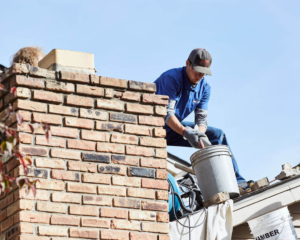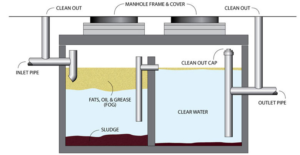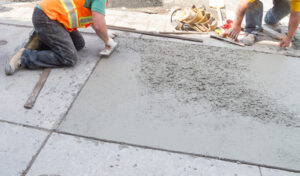Cavapoo Puppies Ohio are smart and people-oriented dogs that do well in most households. They do not respond well to harsh voices and training methods, so gentle training with positive reinforcement is best.
They can suffer from separation anxiety, so you’ll want to set aside time for them or provide mentally stimulating toys. They also need moderate exercise, like daily walks or romps in the yard.

With their playful, happy personalities and fuzzy-faced teddy bear looks, cavapoos are a joy. They’re also smart, easily trainable, and often tolerant of children’s rough play. These “velcro dogs” like to follow their humans wherever they go and are a great fit for active families. They’re flexible regarding exercise needs. They can be content with just one long walk a day or get plenty of physical and mental stimulation from fun activities such as agility, doggie games, and treasure hunts.
Their smaller size makes them adaptable to many different living situations, from apartments to large houses with yards. They also do well with cats and other pets, especially when socialized early in life. However, because of their strong attachment to people, they may suffer from separation anxiety if left alone for extended periods. This can lead to destructive behavior, such as chewing and digging.
Regarding their coats, cavapoos can inherit either a smooth or curly coat from their parents. The resulting texture and color of the coat can influence how much the dog sheds and whether it is hypoallergenic or not. Cavapoos typically shed less than purebred Spaniels and Poodles, but their shedding does vary from dog to dog.
The coat of a Cavapoo can be influenced by its parent breed, but its color can also depend on the genetic makeup of its siblings. This is why it is important to see the parents of a Cavapoo puppy before adopting it.
Cavapoos are very intelligent and respond well to positive reinforcement training methods, which can help them overcome their shyness. They’re a good choice for first-time dog owners and are surprisingly even-tempered, making them suitable for families with kids. However, they have a high energy level and will need plenty of daily exercise to avoid boredom and destructive behaviors.
Due to their small size, cavapoos are prone to health issues such as joint problems and cataracts. This is why it is essential to seek out a responsible breeder who has a good reputation and offers a health guarantee. You should also do your research and learn as much as you can about the health history of the breed, including any potential problems it may have inherited from its parents.
Coat
Cavapoos are affectionate and people-oriented dogs. They form strong bonds with their families and adore being around people, especially kids. They have a lot of energy to burn and enjoy playing fetch. However, they need to be supervised when playing with children to prevent them from being rough or getting hurt. They also need plenty of mental stimulation and exercise to keep them happy.
As a result of their inquisitive nature, they are very easy to train and respond well to positive reinforcement. They also tend to have a good sense of humor and make great companions for first-time dog owners. However, they do become attached to their family members and can have separation anxiety if left alone for long periods of time. This can lead to excessive barking and destructive behavior around the home.
Due to their mixed breed status, cavapoos are prone to the same health issues as other purebred dogs. They can inherit genetic traits from either or both of their parents that could lead to certain health problems, including syringomyelia, mitral valve disease, cataracts, hip dysplasia, elbow dysplasia, luxating patella, allergies, and skin issues. Responsible breeding practices, proper nutrition, and regular veterinary care can help reduce the risk of these health issues.
Inheritance of hereditary diseases like syringomyelia and a weakened mitral valve can lead to heart failure in your pet. This is a serious condition that needs to be diagnosed and treated right away. It’s important to keep up with routine veterinary visits so your vet can check for these hereditary conditions and treat them as soon as they are detected.
The wavy or curly coats that your cavapoo puppy may have inherited from one of their parent breeds require daily brushing and monthly trims. These puppies can also get tangled or matted quite easily, so regular grooming is crucial to keeping their coat healthy and looking its best.
Since these pups are people-oriented, they will need lots of love and attention. These dogs will do anything to please their owners, so they are very easy to train and love to learn new tricks. They are also very intelligent and adapt well to different situations, so they are a great choice for first-time dog owners. However, it’s important to remember that they can develop separation anxiety if left alone for too long and may bark or cause damage at home if bored.
Health
As mixed breed dogs, cavoodles may inherit health conditions from their parent breeds. Responsible breeding practices and regular veterinary care are vital to keep your dog healthy.
They are also prone to dental disease, so brushing their teeth daily (or as often as possible) with a dog-friendly toothpaste will help keep their teeth clean. You can also look out for signs of discomfort, such as drooling or a reluctance to chew. If you notice any changes in your dog’s behaviour, it’s worth chatting to your vet about it.
Affectionate and social, cavoodles love human interaction and thrive in active households. They can live in small apartments or large houses with yards and are a good fit for families, children, and other pets. They are known for their calm, people-centric personalities, which come from their Cavalier King Charles Spaniel and Poodle heritage. Their smaller size makes them a good choice for apartment living, but they still need moderate exercise, such as 30 minutes of walks or playtime each day.
As with all dogs, they need to be kept on a leash when out and about, as they can easily get distracted and run off. They can be prone to separation anxiety and will need positive training to teach them to play and relax on their own.
Due to their intelligence, cavoodles are quick learners and respond well to positive reinforcement training. They are generally obedient and do not require a lot of punishment-based methods.
As they are a relatively new breed, there isn’t a lot of data on the life expectancy of cavoodles. However, they are usually expected to live longer than the average lifespan of a purebred King Charles spaniel or poodle, which is around 10-14 years.
Training
They are intelligent, highly trainable, and eager to please. They do best when trained using positive reinforcement techniques such as reward-based training, including the use of treats and praise. Training should begin at an early age and continue throughout the puppy’s life. Basic commands such as ‘sit’ and ‘leave it’ are important, as is teaching them to walk on a leash.
They have a very social nature and enjoy the companionship of people of all ages, children, other dogs and cats. They are very loyal to their owners and form strong bonds with them. Because of this, they are prone to separation anxiety and can become destructive or bark excessively when left alone for long periods of time. It’s a good idea to work with a dog behaviorist when dealing with this issue.
As a breed, Cavapoos are very active and love to play. They require daily exercise, as well as plenty of mental stimulation through things like puzzle toys and brain games. This helps them to burn off their energy and stay balanced. While they are not a breed that is known to chew excessively, they can be tempted by things like furniture and shoes. To avoid this, you should teach your pup basic obedience skills and provide them with a safe place to chew, such as a crate or dog chew toys.
Like all puppies, Cavapoos can inherit health issues from their parents. Responsible breeding practices, regular veterinary check-ups and a healthy diet can help minimize these problems. However, they can still suffer from a variety of issues like patellar luxation and mitral valve disease, as well as conditions like congenital heart murmurs.
Cavapoos are a unique hybrid breed that is incredibly adorable and charming. Their irresistible teddy bear appearance, round faces and big expressive eyes capture hearts at first glance. While their playful and loving nature makes them great family dogs, they also make a wonderful therapy dog and are suitable for any home environment. If you’re looking for a new addition to your family, a cavapoo may be the perfect match!


